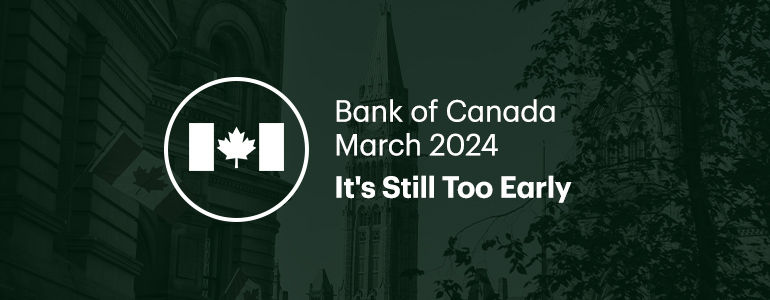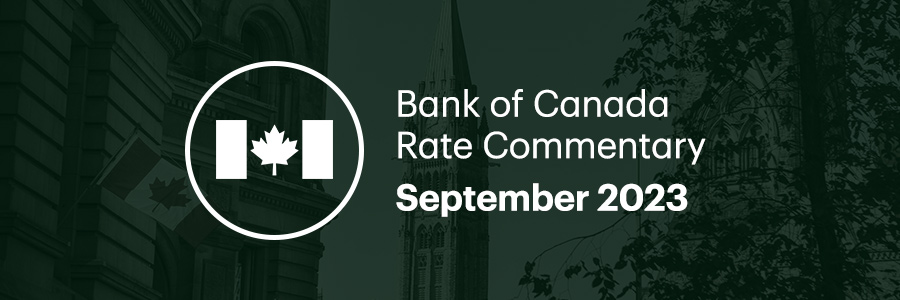March 2024 BoC: It's Still Too Early
By: Rob Both, Chris Whelan, Jayati Bharadwaj
Mar. 11, 2024 - 3 minutes 30 seconds
The Bank of Canada stuck to the script as it held the overnight rate unchanged at 5.00% in the March policy decision and continued its policy of quantitative tightening, without any material changes to its forward guidance. The tone of the policy statement was mostly hawkish, as the Bank downplayed recent inflation progress after headline CPI fell back inside the target range in January, while the opening comments to Macklem's press conference were more explicit, stating "It’s still too early to consider lowering the policy interest rate."
Inflation pressures still too broad, but trending in the right direction after January CPI report
The policy statement did contain some balancing notes, with the Bank acknowledging that global growth slowed in Q4 and that inflation pressures have eased across the U.S. and Europe. And while the Bank also acknowledged stronger Q4 growth, it noted that growth was well below potential and domestic demand has continued to contract. The Bank also noted further progress in the labour market, where population growth has continued to outpace employment gains, alongside "some signs" of easing wage pressures. However, all of those more dovish elements were overshadowed by the Bank's characterization of underlying inflation (still persistent) and the unchanged forward guidance, with the Bank repeating that the "Council is still concerned about risks to the outlook for inflation," and "wants to see further and sustained easing in core inflation".
The opening comments to Governor Macklem's press conference also hit many of the same notes. Macklem stated that the Bank will be watching the April Business Outlook Survey for more information on corporate pricing behaviour and inflation expectations, although he also noted that they "want to see a further deceleration in core inflation in the coming months," which is notable given the fact that the BoC will only get one more CPI report before the April meeting.
Overall, the March policy statement and opening comments to Governor Macklem's press conference suggest the Bank will take a patient approach as it continues to evaluate progress towards the inflation target. The Bank's desire for "further and sustained" easing of price pressures leaves a very narrow pathway for the Bank to cut in April, and we do not think the Bank will have enough evidence of downward momentum in core inflation by June either. We continue to look for the first rate cut in July, with 100bps of easing in 2024.
Market Implications
Rates: "Too Early" is the phrase of the day; this gave the market a moderate hawkish bias relative to the U.S. following the BoC release. While CAN-US 10s moved 5bps higher, we see this as both a reversal of the CAD strength earlier in the week (likely position squaring/setting up ahead of the meeting) and as a moderate hawkish reaction from the market. Long story short, whether the BoC starts cutting in April, June, July or September we still see the same degree of cuts. We look for the Canada-US 10y spread to rise further, and for the 5s30s curve to steepen outright and versus the U.S.
FX: CAD got a lift from relatively hawkish BoC communication. Markets had 10bp of cuts penciled in for April, which should be priced out. The debate is now between June/ July so that the BoC and the Fed will not be too far from each other in starting their easing cycles. In terms of the correction in positioning and Fed expectations (pricing is now close to Fed dots of 75bp of cuts), it seems as if markets are poised to react more to softer data than stronger data this week. The reaction function of the USD will be asymmetric, and we can see that in the price action after ISM, JOLTS and Powell's testimony.
We continue to expect CAD to appreciate vs the USD but underperform G10 peers that are more sensitive to a global growth pick up and risk sentiment (SEK, GBP) and those that will get a lift from diverging interest rate differentials (JPY).
Subscribing clients can read the full report on the TD One Portal










